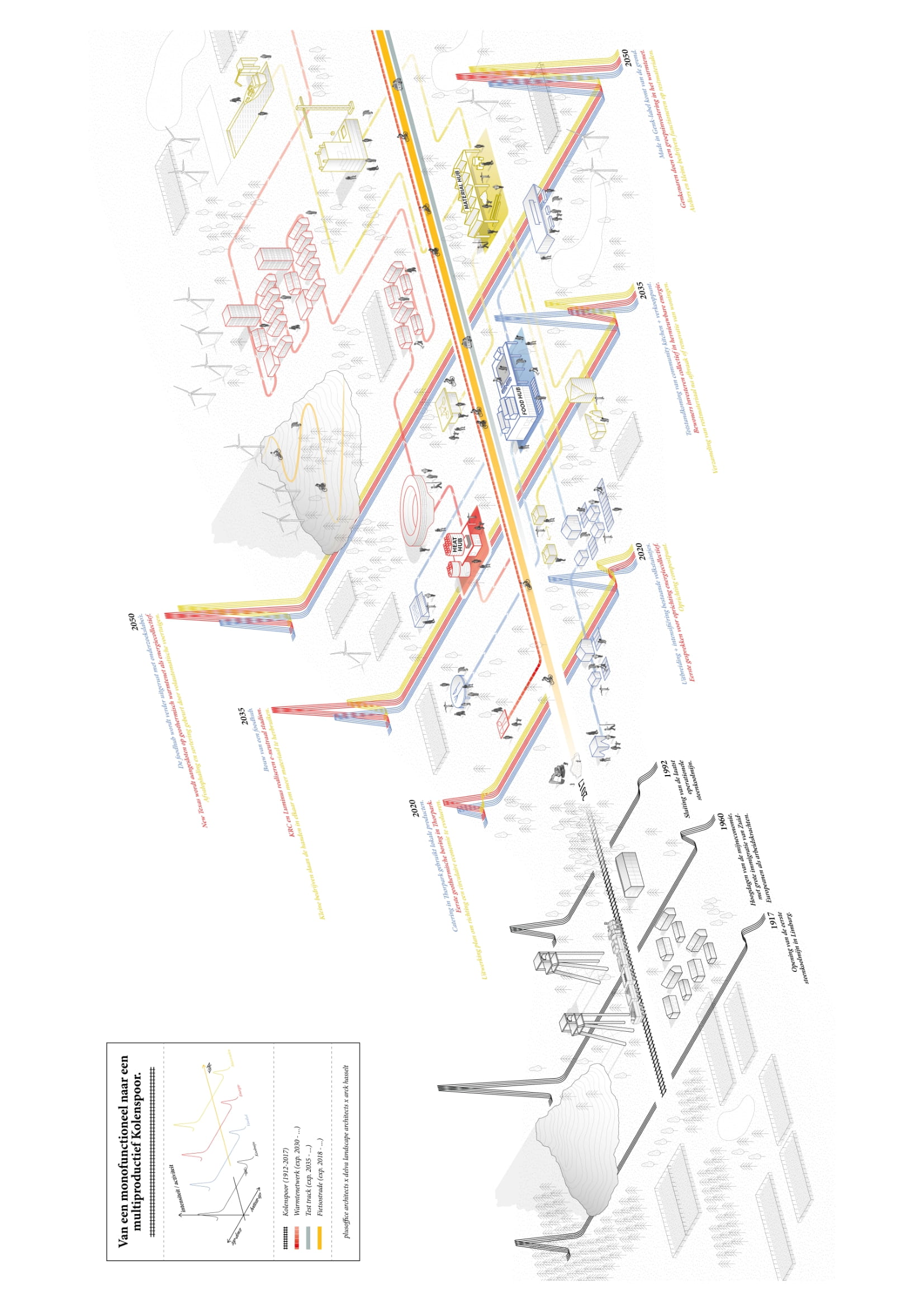KOLENSPOOR - IMAGINING ‘ECOLONY’: THE ROLE OF IMAGINATION IN REPOLITICISING SPATIAL CHANGE
The project Kolenspoor created collective imaginations amongst multiple actors (government, market, inhabitants and experts, and non-human actors such as trees, animals etc.) about the future of the “Coaltrack”, an old underused railway track. In order to translate between multiple actors in this collective imagination process, many types of images were used: paper and textile maps, schemes, sketches, pictures, diagrams, timelines, narrative portraits and 1-to-1 prototypes. Some of the images built on previous research projects, some were based on researchers’ engagements with inhabitants’ stories and some lived on in projects and communities. This case study explores the concepts of “imagination” and “thought-image” to explore the political dimension of translations that occur between multiple actors in space and time. In this process images are articulated, selected, re-articulated and foregrounded, invoking and representing a ‘landscape of power’. This case study analyses how, over time, images provided room for a reshuffling of this landscape of power, in a context that has been subject to multiple colonisation processes. Images from 5 ‘episodes’ are compared and assessed in terms of translations.
| University/Design-Architectural Studio | Jan Schreurs (KULeuven, Departement Architectuur) and Liesbeth Huybrechts (UHasselt) |
|
Project lead |
T.OP Limburg (Ruimte Vlaanderen) |
|
Partners |
The article spans different episodes, each characterised by different constellations of partners, as can be found in publications: T.OP Limburg (2015a), MAAT-ontwerpers & ZUS (Zones Urbaines Sensibles) (2014), Werkgroep Kolenspoor (2015b), plusoffice architects, DELVA landscape architects and Uhasselt/Social Spaces (2016a), T.OP Limburg (2016b) |
|
Country/region |
Genk |
|
Keywords |
Imagination, translation, politics, spatial change, participatory design |
.jpg)
